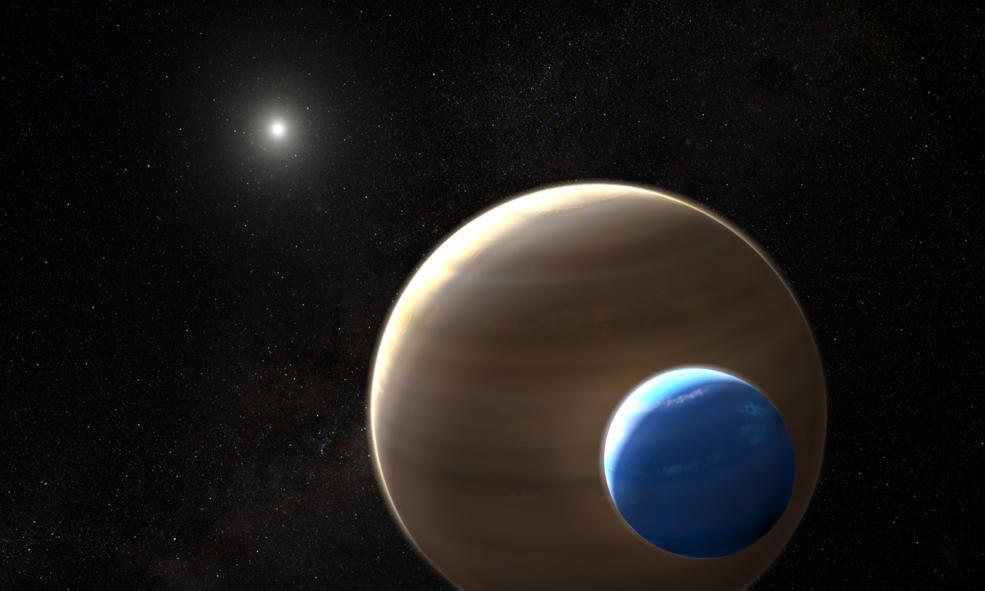Discovering a planet outside our solar system is difficult. Spotting a moon orbiting one of those distant planets? Well, that’s even harder. It is so tough, in fact, that no one has ever accomplished it.
But soon that could change. In a recent paper in the journal Science Advances, Columbia astronomers David Kipping and Alex Teachey report evidence of a moon around a Jupiter-like planet called Kepler-1625b, which is orbiting a star some eight thousand light years from Earth in the constellation Cygnus. With data gathered by NASA’s Hubble Space Telescope, the astronomers determined that when the planet passed in front of its star in late 2017, the star’s brief dimming was followed by a second, more subtle dip in light. That is consistent, Kipping says, with “a moon trailing the planet like a dog following its owner on a leash.”
The Columbia researchers had previously published more tentative evidence of Kepler-1625b’s apparent lunar companion. This new study contains higher-resolution data that also suggest that Kepler-1625b is wobbling slightly as it hurtles through space, as would be expected if a moon were orbiting the planet and exerting a subtle gravitational pull from different directions.
Kipping and Teachey say that they will need to observe Kepler-1625b passing by its star at least once more to confirm their findings. (The planet’s next transit will occur in May 2019.) But their study has already created excitement among astronomers, not only because it contains the most compelling evidence yet for a moon outside our solar system — a so-called “exomoon” — but also because it suggests that the body orbiting Kepler-1625b is unlike any of the approximately 180 known moons in our solar system. For example, Kipping and Teachey’s exomoon candidate appears to be the size of Neptune, which would make it by far the largest moon ever discovered. And based partly on its orbital path, the scientists say that it is likely hot and gaseous, whereas all known moons are cold and rocky.
“This moon would have fairly surprising properties,” says Kipping, whose lab’s research was the subject of the cover story in the Winter 2017–18 issue of Columbia Magazine. “If confirmed by subsequent Hubble observations, the finding could provide vital clues about the development of planetary systems and cause experts to revisit theories about how moons form.”



